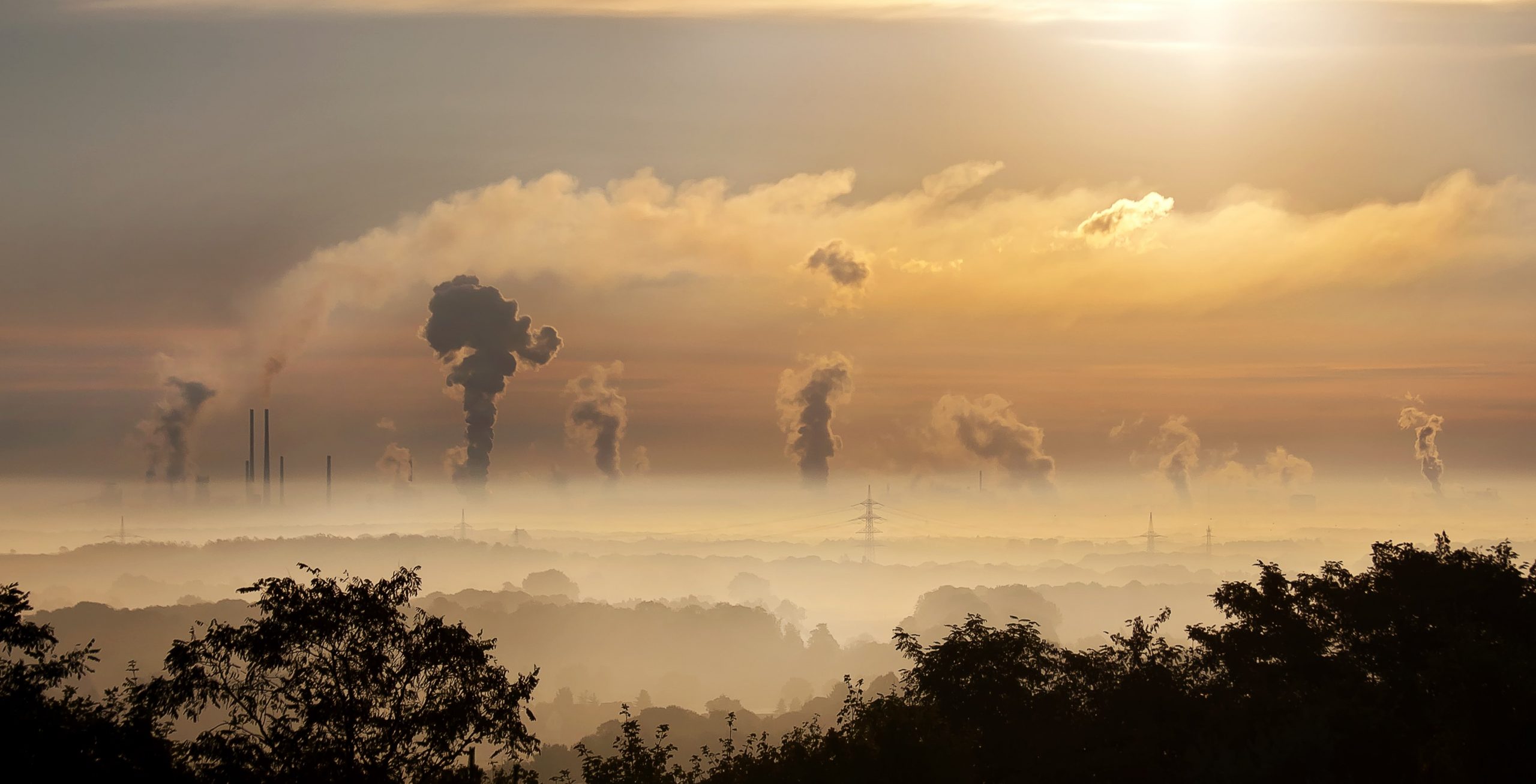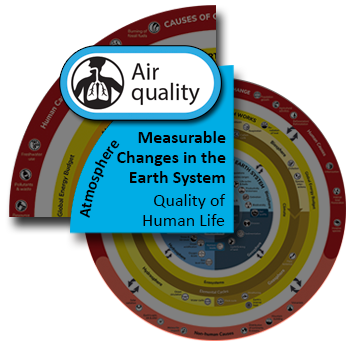Air quality refers to how clean or polluted the air is, which is determined by measuring pollutant levels in the air. The pollutants typically measured include airborne particles (which are classified by their size and includes soot, ash, dust, and aerosols), and the gases carbon monoxide, sulfur dioxide, and nitrogen dioxide, all of which may be harmful to human health and may cause disruption of ecosystems.

Air quality decreases with the burning of fossil fuels, which can create visible smog. Credit: Pixabay User Foto-Rabe
A variety of human activities and environmental changes can cause changes to air quality, including:
- The burning of fossil fuels and agricultural activities, which increase the concentration of both airborne particles and harmful gases in the atmosphere.
- Fires, which decrease air quality. Large-scale fires can be the result of accidents, but are also lit deliberately to remove trees and clear land for agricultural activities.
- Wind, which can stir up dust and influences the distribution and concentration of pollutants.
- Rain, which decreases the concentration of pollutants by removing or dissolving pollutants in the atmosphere.
- Volcanic eruptions, which release gases and airborne particles that decrease air quality.
Can you think of additional cause and effect relationships between air quality parts of the Earth system?
Visit the food availability and nutrition, water quality and availability, and health and disease pages to explore more connections between the quality of human life and global changes.
